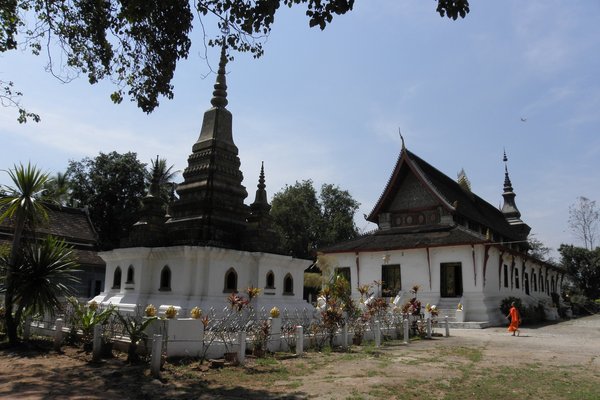Laos
Luang Prabang
The Town of Luang Prabang is an urban landscape that is partly traditional Lao and partly colonial.
Luang Prabang originated as a defended royal administrative complex, with adjacent temples and monasteries. It was the royal capital and seat of government of the Kingdom of Laos and its predecessors, and also the centre of Buddhism in the region. The fusion of Lao and 19th and 20th-century colonial art and architecture can be seen in the town’s religious buildings (richly decorated wooden pagodas), vernacular buildings (also in wood) and colonial buildings (in brick).
Community Perspective: “Luang Prabang is maybe the last bastion of this region that still can perfectly keep its bygone age atmosphere of Indochina” as Frederik puts it. But it is a bit low on outstanding sights: the Wat Xieng Thong temple probably is the best of them.
Site Info
Official Information
- Full Name
- Town of Luang Prabang (ID: 479)
- Country
- Laos
- Status
-
Inscribed 1995
Site history
History of Luang Prabang
- 1995: Inscribed
- Inscribed
- Type
- Cultural
- Criteria
- ii
- iv
- v
Links
- UNESCO
- whc.unesco.org
- Official
-
- tourismluangprabang.org — Luang Prabang Tourism
All Links
UNESCO.org
- whc.unesco.org — whc.unesco.org/
Official Website
- tourismluangprabang.org — Luang Prabang Tourism
News Article
- Feb. 2, 2024 apnews.com — Fears grow that dam across Mekong River in Laos could harm World Heritage site of Luang Prabang
- March 5, 2021 thediplomat.com — UNESCO Calls for Heritage Assessment for Lao Hydropower Dam that may turn Luang Prabang into a lakeside town
- May 18, 2017 atimes.com — China’s plan for the Mekong River envisions a big new commercial port at Luang Prabang
- Dec. 8, 2014 ttrweekly.com — Luang Prabang will introduce electric vehicles, March 2015, to reduce pollution
- Jan. 3, 2014 vientianetimes.org.la — Sacred Prabang image gets a new home
- April 14, 2008 iht.com — Luang Prabang grapples with modernity
- May 1, 2006 thestar.com — Growing culture clash: the difficulties with preserving a living town
Community Information
- Community Category
- Urban landscape: Asian
Travel Information
Recent Connections
-
Perfect Inscriptions
1995 -
Tai peoples
Capital of Laotian (Tai) Lan Xang Kingd… -
Sima Stones
Notable Sima Stones can be found at Wat…
Connections of Luang Prabang
- Geography
- Trivia
-
-
Built or owned by French
Significant French colonial influences on buildings in inscribed area - both administrative buildings and houses of french colonists
-
- History
-
-
Fusion
"fusion of traditional architecture and Lao urban structures with those built by the European colonial authorities" -
Coronation Locations
The last king of Laos decorated and refurbished Luang Prabang royal palace for his coronation, before the end of his monarchy. -
Located in a Former Capital
Kingdom of Luang Prabang and later Laos (1707-1975)
-
- Architecture
-
-
Gold Surfaces
The front wall of Wat Mai main buiding is covered with thick gold leaf -
Mosaic art
Wat Xiang Thong's mirror mosaic -
Wooden architecture
-
Neoclassical architecture
Royal Palace is built in French neoclassical style
-
- Damaged
-
-
Destroyed during invasion
Black Haw Invasion in 1887 destroyed most of temples and palaces -
'Threatened' by Dams
Luang Prabang hydropower project (LPHPP), situated 25 km upstream from the property. It is classified as an Extreme Risk Dam
-
- World Heritage Process
-
-
First inscriptions
Laos 1995 -
Minor modifications after inscription
2013: inclusion of some important wetlands and landscape features across the Mekong River within the property. -
Perfect Inscriptions
1995
-
- Religion and Belief
-
-
Sima Stones
Notable Sima Stones can be found at Wat Xiang Thong. -
Stupa
-
Theravada Buddhism
-
Legends and Folk Myths
Luang Prabang's legend of the city spirit guardians - Pu No and Na No
-
- Human Activity
-
-
Tai peoples
Capital of Laotian (Tai) Lan Xang KingdomSee en.wikipedia.org
-
Gilded Lacquer or Urushi
Wat Xiang Thong's main hall is decorated with black and gold lacquer -
Chariots
The Golden Royal Funeral Chariot is kept in Wat Xiang Thong -
Petrosomatoglyphs
Buddha Footprint at Phu Si -
Festivals
Pii Mai (Laos New Year) -
Crown Jewels
The regalia of Laos are kept in the Royal Palace Museum -
Cremation
Luang Prabang's royal cremation chariot is kept in Wat Xiang Thonh -
Boats
All major temples in the old town have their own long boats for annual boat racing festival
-
- Constructions
-
-
Theatres and Opera Houses
Ballet Theatre in the Royal Palace Complex -
Thrones
royal throne inside Royal Palace, built permanent attached to the throne hall -
Notable Bridges
Bamboo Bridges of Luang Prabang
-
- WHS on Other Lists
-
-
World Monuments Watch (past)
Chom Phet Cultural Landscape (2006) -
U.S. Ambassadors Fund
Restoration of Wat Xieng Thong (Temple of the Golden City) in Luang Prabang (2011), Conservation of 16th-Century Statues and Other Ethnographic Objects at Wat Visoun in Luang Prabang (2010), Preservation of the Collections in the Luang Prabang National Museum (2009), Preservation of the Lao National Museum Collection (2007) -
UNESCO 'LEAP' program
-
- Timeline
-
-
Built in the 20th century
Due to its OUV "in the years between 1915 and 1925 a new concept, that of urbanizatlon, was Introduced" (AB ev), though there are older temples and stupas
-
News
- apnews.com 02/02/2024
- Fears grow that dam across Mekong …
- thediplomat.com 03/05/2021
- UNESCO Calls for Heritage Assessme…
- atimes.com 05/18/2017
- China’s plan for the Mekong River …
Recent Visitors
Visitors of Luang Prabang
- AC
- Adam Hancock
- Alejandro Lau
- Alexander Parsons
- Alex Baranda
- Alex Goh
- Alex Marcean
- AlexSchedel
- Ali Zingstra
- A. Mehmet Haksever
- Ammon Watkins
- Ana Lozano
- arnaugir
- Artur Anuszewski
- Aspasia
- Atila Ege
- Balu93
- BenReeve
- Bernard Joseph Esposo Guerrero
- Bill Maurmann
- Bin
- Boj
- Bram de Bruin
- c82wc1
- Carlo Medina
- Carlo Sarion
- cflw
- Chalamphol Therakul
- Chantal den Haan
- chenboada
- Cheryl
- chiuliqi
- Christine
- Christravelblog
- Cirene Moraes
- Claire Bradshaw
- Cluckily
- Clyde
- Corinne Vail
- Csaba Nováczky
- CynthiaSam
- David Aaronson
- David Marton
- Delphine Delaunay
- Dennis Nicklaus
- Dimitar Krastev
- disnsam
- DL
- Don Irwin
- Dorejd
- Doubanjiang
- DouglasR
- Drk9Stormy
- edstar500
- Els Slots
- Emili Xaus
- Erfe91
- Erik Jelinek
- Errol Neo
- Eva Kisgyorgy
- Evgenii
- Fan Yibo
- Fernweh
- Frederik Dawson
- FS
- Garrett
- Gary Arndt
- GerhardM
- giloudepuertorico
- Gjert
- Hammeel
- Harald T.
- Harry Mitsidis
- headventure
- henrik_hannfors
- henryjiao18
- hotpickle
- Iain Jackson
- Ingrid
- inomusay
- Ivan Rucek
- ivantham
- Jacob Otten
- Jana and Matt
- Janos
- Javier Coro
- Jeanne OGrady
- Joel on the Road
- Jon Opol
- JoStof
- Joyce van Soest
- Justin Rickey
- jxrocky
- KarenBMoore
- Kasper
- KeithBailey
- Ken DJ
- Kevin247
- Kjlauer
- Kurt Lauer
- Liamps91
- lichia
- Linz
- Loic Pedras
- Luboang
- Lucio
- Ludvan
- Luis Filipe Gaspar
- Maciej Gil
- Maciej Gowin
- Malgorzata Kopczynska
- marcel staron
- Marcobrey
- Mariam
- Martin
- Matthewrw
- MaYumin
- Michael Ayers
- Michael Novins
- Michael Turtle
- Mikko
- Miloš Tašković
- MMM
- Monica66
- Morodhi
- Mstrebl1990
- Mtlmr
- Nafis N
- Naim Y
- nan
- NH1984
- Nihal Ege
- PabloNorte
- Patrik
- Patrik_globe
- Paul Schofield
- Peter Lööv
- pete_simms
- Philipp Leu
- Philipp Peterer
- Pieter Dijkshoorn
- Piotr Wasil
- Potsdamer
- Randi Thomsen
- ReallyDeepThoughts
- reddargon
- Reza
- Riccardo Quaranta
- Risson
- Rob Wilson
- RYU
- Sandra!
- scubarrie
- Sergio Arjona
- Shandos Cleaver
- Shannon O'Donnell
- sibariam
- Slavi
- SnakeGreen
- sncjob
- Solivagant
- Stanislaw Warwas
- Stefan Loov
- stephanvermeulen
- stephhollett
- Sutul
- Svein Elias
- SymonMajewski
- Szucs Tamas
- Tammy Gouldstone
- Taotao Chen
- Tcchang0825
- Tevity
- Thanneermalai L
- Thomas Buechler
- Thomas van der Walt
- Tim Allen
- Timonator
- Timothy C Easton
- TimPick
- tingmelvin
- Tinuszke
- Toxicologist
- Truls Brekke
- Vernon Prieto
- voyager
- Westwards
- Wo_ko
- Xiquinho Silva
- Yi Han Goh
- Zach
- zfish
- Zoë Sheng
- Zos M
- ZZSong
Community Reviews
Show full reviews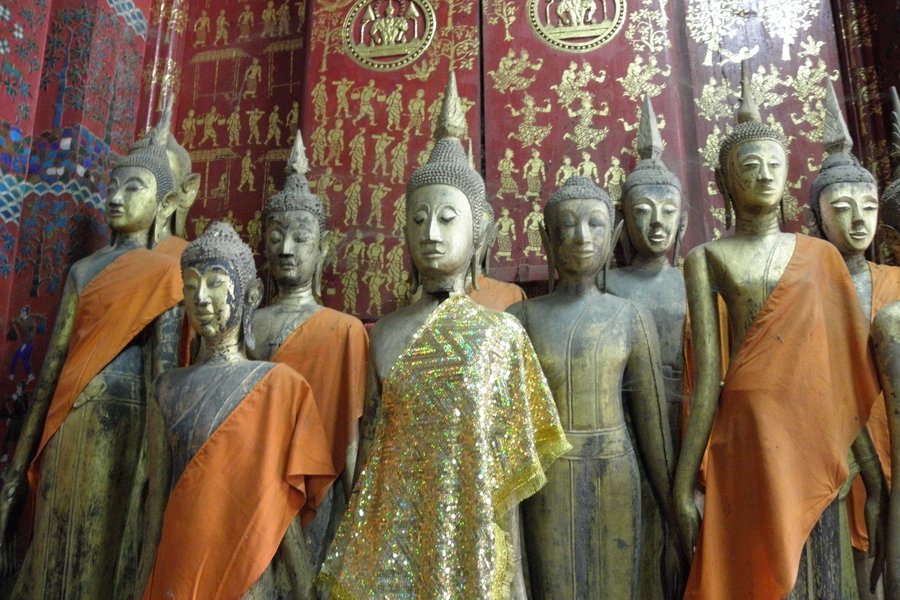
Luang Prabang was my second stop in a trip that was bookended by Chiang Mai (currently on the T List) and Angkor (one of the most widely regarded WHS sites in the world), and even though it is smaller than the other two, I believe it deservedly belongs to the WHS List. Although some reviews liken the Lanna-style temples in Chiang Mai architecturally similar to those in Luang Prabang, I think there are subtle differences that differentiate the two. Nonetheless I don't think the temples are the main draw for Luang Prabang, unlike that in Chiang Mai, although you can very well cover most of it along Sisavangvong Road in half a day. In fact, forget most of what was written for the OUV of Luang Prabang - I think it is just quite hard to describe Luang Prabang, and the hodgepodge about French-colonial structures blended with the old temples don't really articulate properly the true juxtaposition of clashing things ongoing in LP that gives it its charm. In this vein I don't feel either Chiang Mai nor Angkor has that similar immaterial charm that I believe gives LP its OUV.
What to see
As mentioned, there's really not much to see in terms of architecture in Luang Prabang, instead, a lot of Luang Prabang is seeing things that are transient. Architecturally, the structures in Luang Prabang are not as impressive as the ones in Chiang Mai. Even though there is a French colonial vibe to it, I …
Keep reading 0 comments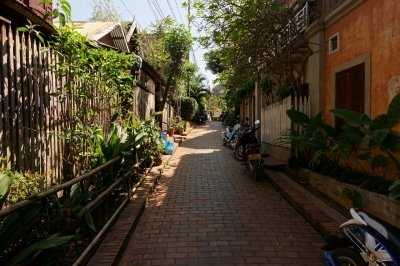
As my first stop in Laos I visited Luang Prabang, the former capital of Laos. The main components of the site are situated at the confluence of Mekong and Nam Khan rivers.
The town boasts several temples, some French colonial buildings and the former royal palace, albeit that last one is rather amusing than impressive. My highlight was the Wat Xieng Thong temple. And the overall relaxed mood of the city.
Getting There
Luang Prabang has some domestic flights. It has also a few international connections to China, Vietnam and Thailand. My impression was that it's actually better connected internationally than the capital, Vientiane.
Apart from the flights there are also busses and the more touristy mini busses taking you to most parts of the country. Specifically, Luang Prabang is the closest major town for Phonsavan and the Plain of Jars.
While You Are There
I think the town can be visited in half a day (or even a bit less). Still it would be a pity if you left early. Plus, the bus connections may very well force you to stay at least a night.
You have plenty of good restaurants to choose from in Luang Prabang. The town also offers Laotian cooking classes and daily yoga classes. Only isssue I had that it get's really warm around noon so it's not a good time to stay outside and move around.
If you plan to venture outside (I didn't) …
Keep reading 0 comments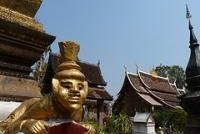
I visited this WHS in February 2011. Luang Prabang is a perfect fusion of traditional architecture, Lao urban structures and European colonial structures built in the 19th and 20th centuries. There are several wats to visit and nearby Buddhist caves. The highlight of my visit though was giving early morning alms to the Buddhist monks of the town. A totally unique experience and one of my favourite WHS.
Keep reading 0 comments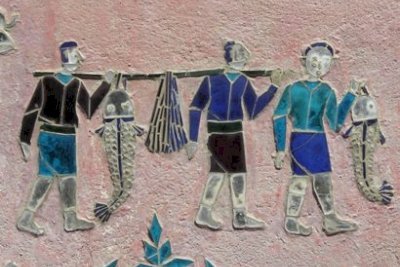
I am sorry to say that this was another disappointment, another case of probably expecting too much (like the Ellora Caves). Luang Prabang is almost unanimously praised. And sure, maybe I was "late" and the town is too commercialized now. But I don't believe that the essence was much different 10 years ago: Luang Prabang has a great location and a charming atmosphere. But let's be honest: there's not a whole lot to see.
I think that a lot of people enjoy coming here because of its Mediterranean feel - it's slow, sunny, and romantic. There are dozens of cafés and restaurants. You can unwind, and relax. It's also quite a contrast with Bangkok or Hanoi, two cities where most people fly from into Laos. I travelled through Laos from South to North (leaving Luang Prabang for the last), so I had already gotten used to the country's quietness, the baguettes and Lao Beer.
Luang Prabang certainly is lacking authentic historic sights. I have read the AB evaluation a couple of times now, and it's thin, very thin.
All's bad then, avoid it? No, certainly not. I loved Wat Xieng Thong with its glittering exterior mosaics. The former Royal Palace is also worth a visit. But don't confuse Luang Prabang with the whole of Laos - I enjoyed my stay in the South (an almost different country from the North), the East (with its Plain of Jars and turbulent history) and the various forms of land and …
Keep reading 0 comments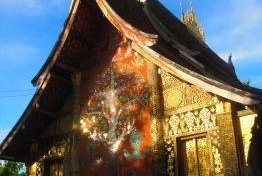
I have to admit that I really do not want to write this review as I do not want Luang Prabang to be changed by influx of tourists that may decide to visit this one of the most stunning places in Southeast Asia after reading this review. Luang Prabang as I mentioned one of the best places to visit in this region was the former capital of ancient kingdom of Lan Xang or the land of million elephants, Luang Prabang was one of the cultural centers of this region; many temples in such small town are the greatest testimony of local wealth and civilization. Sadly that Luang Prabang as present is just the shadow of its former glory as the town had been destroyed by Chinese invasion, most of the temples and town were rebuilt in 19th and 20th centuries, so this town is quite unique as the town had been rebuilt in the time that French had started its influence in Indochina, so this town has unique blend of local and colonial architectures as well as urban layout.
For amazing local architecture and art, temples are the places to see, Luang Prabang has many temples, although the town cannot compete on the number of temples like Bangkok or Chiang Mai in Thailand which has more than 300 temples in each city, the art of Luang Prabang temple is in the same league of beauty and maybe more appreciated to admire. The top three of the must-see temples are …
Keep reading 0 comments
